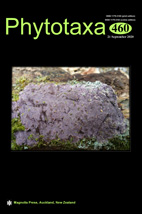Abstract
Origanum is a well-known genus that is widely distributed and comprises many hybrids and endemic species in Turkey. Some morphological and molecular studies in the literature have aimed to clarify infrageneric or sectional classification of the genus. However, studies regarding the shape, size, and color of mericarps of Origanum taxa remain limited. The mericarp micromorphology of 30 taxa, including 7 hybrids of the genus Origanum, were evaluated herein using both stereo microscopy and scanning electron microscopy (SEM) to determine some useful features for taxonomical classification of the genus. The shapes of mericarps are usually ellipsoid, rarely ellipsoid-oblong, obovoid, broadly obovoid, while the color of mericarps vary from shades of brown to reddish. A significant variation was observed in the surface ornamentation of mericarps, which was mainly useful at the sectional and species level. Also determined were 2 main types: I and II, and 5 subtypes: pusticulate, reticulate-ruminate, reticulate-foveate, ruminate, and foveate. The micromorphological characters of mericarps, in addition to their morphological features, will contribute taxonomically to the classification of the sections of the genus Origanum and separation of the species within the sections. In addition, these characters will be useful to understand the effect of hybridization on variations in the micromorphological characters. This was the first detailed study on the mericarp micromorphology of the genus Origanum and its taxonomic implications.

